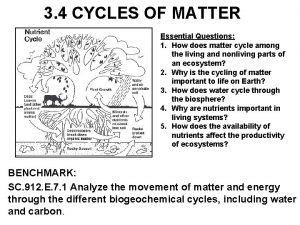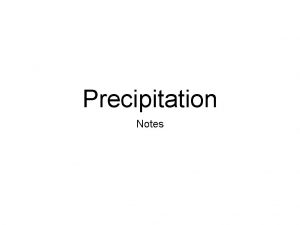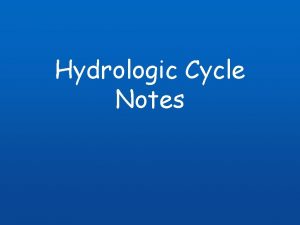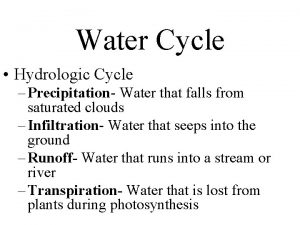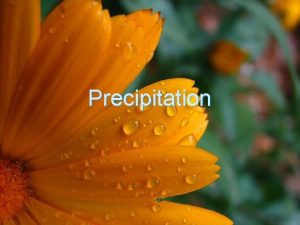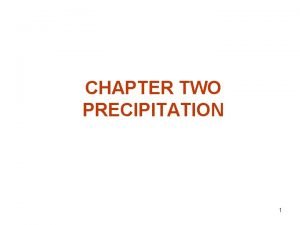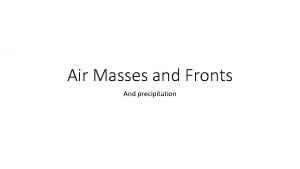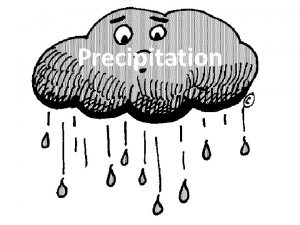Water Precipitation Notes Water Cycle The total amount










- Slides: 10

Water & Precipitation Notes

Water Cycle • The total amount of water on our planet is always the same, it is not created or destroyed • Water Cycle: Water simply moves through the atmosphere, the oceans, the land, and living things in a constant cycle

Water Cycle • Evaporation: water changing form from liquid to vapor (gas) • Condensation: opposite of evaporation, water changing form from vapor to liquid • Precipitation: water that falls from clouds to the Earth’s surface (rain, snow, sleet, hail, etc)

• Turn to page 55 in your textbook, and draw a diagram of the Water Cycle in your notebook

Humidity • Humidity: a measure of how much water vapor is in the air • Psychrometer: an instrument that measures humidity • Important! Cool air holds less water than warm air • Relative Humidity: the percentage of water in the air compared to the maximum amount of water the air can hold

Condensation • Dew point: the temperature at which condensation begins – If the dew point is above freezing, liquid droplets form – If the dew point is below freezing, ice crystals form • Dew: liquid water condensed on Earth’s surface • Frost: ice crystals condensed on Earth’s surface

Clouds • Clouds form when water vapor in the atmosphere condense to form liquid droplets or ice crystals of water • As air cools, the amount of water it can hold decreases, water forced out of the air forms clouds! • Cloud droplets and ice crystals form around tiny particles of salt, dust, and smoke in the air

Clouds • Many different types of clouds depending on altitude and shape • Shape – Cirrus: wispy clouds – Cumulus: fluffy clouds – Stratus: flat layers • Altitude – Alto- : high altitude – Fog: clouds at ground level


Precipitation • When cloud droplets or ice crystals get heavy enough, they fall to the Earth as precipitation – Rain: liquid precipitation – Sleet: small particles of ice – Freezing Rain: liquid rain that freezes when it lands on something cold – Snow: ice crystals – Hail: large pellets of ice, can get larger than baseballs!
 Gravimetry steps
Gravimetry steps Co precipitation and post precipitation
Co precipitation and post precipitation Cycling of matter in an ecosystem
Cycling of matter in an ecosystem Water and water and water water
Water and water and water water Energy pyramid
Energy pyramid The total amount of an employee's earnings is called
The total amount of an employee's earnings is called Brain pop water cycle
Brain pop water cycle Water cycle the hydrologic cycle
Water cycle the hydrologic cycle Uafir fórmula
Uafir fórmula Total revenues minus total costs equals
Total revenues minus total costs equals Total revenues minus total costs equals
Total revenues minus total costs equals


